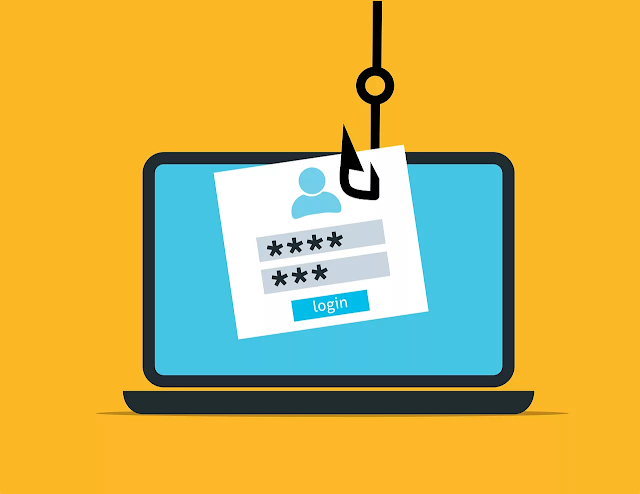Humans have protected their property for centuries; there are many ways to do so, like locking your home and putting passwords on your mobile phone, and the same with some other websites or applications.
Hi, this is Shivanshu Sharma here, and today we will discuss cyber security.
These sites can be social media, your email, or any personal thing. But sometimes, hackers hack your accounts and misuse them. Have you ever thought about how this happens, how hackers know your passwords, and how they got millions of people's passwords in just some hours or days?
In this article, we will see some ways that hackers use to crack your password. This article is just for educational purposes and not for learning password hacking; I hope after reading this, you will understand how you can secure your accounts.
What is hashing algorithm?
Whenever you create an account, your name, email, age, etc., save in the text form, but the password is automatically converted into hashed form by a hashing algorithm. For example, if your password is "123456," it might be changed by a hashing algorithm like "dhb47r54r4grgwd545gr5e3e4e".
Every company has its own hashing algorithm which changes passwords into complicated and random words, numbers, and symbols.
Big giants companies like Apple, Facebook, Microsoft, and dominos have some data breaches, but hackers couldn't access those accounts because they have the hash file of the report, not the same password.
Some hashing algorithms like - SHA-1, SHA-2, MD5, TIGER, MD6, ADLER32, ripmd128, CRC-32.
Rainbow tables
A Rainbow table probably is the first-way hacker would try to know your password; there are many rainbow tables available on the internet; in the rainbow table, there are the most commonly used passwords with their hashed forms, now hackers would try to take your hashed id and try to match it with the hashed id in the rainbow table.
passwords like - 123456, password, 654321 are way too easy to guess, and they can be cracked by rainbow tables instantly
If you created a weak password, then the hacker would probably get a match, and then your account can be hacked; that's why it's advised by every company to create a solid and different password so that this method won't work.
Dictionary attack
This method is more complicated than the rainbow tables attack, but sometimes it works.
Like rainbow tables, dictionaries are available on the internet; inside these dictionaries, thousands of passwords are available but not in the hashed form.
A hacker has to make and check hashed forms one by one; if the hacker gets the exact hash, the hacker can find your password in the dictionary; this process is complicated and takes a very long time.
Brute force attack
With this method, a hacker will find every letter's different possible hashed forms and then compare them with your hashed password.
Brute force is an ancient attack but is still very popular among hackers. To survive this attack, you should create a strong password; with a strong password, a hacker would take millions of years to crack it, but if you have made and weak password, your password might be cracked within minutes.
You should also not sign up with your Email or Facebook account because sometimes third-party applications can be a back door to your account. It will become much easier for a hacker to hack with a low-security third-party tool.
These are the types of attack where a hacker hacks the database of the company and successfully steal your hashed form password; as we all know, in the past, all the famous companies like Apple, Microsoft, Facebook, and Uber were hacked leaked data of millions of users.
When most people talk about hacking, they forget to tell people that you can also get hacked by a system failure; it is essential to talk about these things to protect your accounts as much as possible.
In our next segment, we will discuss types of hacking attacks where you might mistakenly transfer your password to the hackers and get hacked.
Phishing attack
In this attack, a hacker develops a fake website similar to the original and tries to enter your login password there. When you enter your password, it automatically sends it to the hacker's computer.
This type of hacking is prevalent among the black hat hacker community because it is so easy to do and based on social engineering, which means less coding is required.
Let's take a real-life example to understand it much better; if a hacker wants to hack your Facebook account, the hacker will develop a web page similar to the Facebook login page and code in a way when you enter your password to log in from that fake page your password will automatically send to the hacker's computer.
That fake page will be sent to your email saying, "hey look you got 30 friend requests" now, after looking at the mail, you will become excited and open that mail and login from there; after putting your username and password, the page will reload, and nothing happens after that you might try to login Facebook by manually entering facebook.com in the browser but now your I'd, The password is in the hacker's computer.
Social engineering
Social engineering is pretty standard in credit card fraud; hundreds of people every day get scammed because of a lack of knowledge or because of Social tricks a scammer or hacker tries on you.
As we just discussed the phishing attack, how a hacker sends you a mail saying, "Hey there you just got 20 friend requests" these types of sentences are loved by every human; we are social animals we like to make new friends or trust somebody.
Hackers sometimes pretend to be a customer care executive or any other trust-able person and try to get the passwords without even hacking your computer; a hacker would say, "Sir, your account needs to get verified, or we will disable your account, to prove yourself tell me your username and password.
Remember that no customer care or any legitimate person would ask you to share your password or OTP. Both of these things belong to you. Only never share any of these; never get too nervous. Take your time and respond.
Malware or spyware attacks
Many viruses are available, like ransomware, Trojan horse, etc. Every virus acts differently. Ransomware locks your computer and asks you to buy the key to unlock your data.
Malware and spyware are prevalent computer viruses; these viruses can send your computer's information or your data in your computer to the hacker very smartly.
These viruses can enter your computer if you have inserted an infected drive or you might have downloaded pirated software or visited an HTTP website.
Viruses can travel via the internet and storage drives, install any good antivirus software and scan every drive before using it.
Paid software is straightforward to access for free thanks to the internet; we can download any cracked software, but have you ever thought about why people break all the software and how they benefit themselves? Most cracked software is infected with viruses that stoles information from your computer.
Check the website's URL (https://www.example.com) or (http://www.example.com)
HTTPS (Hypertext transfer protocol secure) represents a secure website. No hacker can steal information from this type of website; HTTP is not an excellent website to log in to or even use; the risk of data leak is much higher than HTTPS.
Conclusion
So we are at the end of this article; till now, we have learned a lot about hacking and how a hacker can hack your password; my objective is to educate people so that we all can use our electronic digital devices safely.
You can click and directly read that specific paragraph from here -
If you have any problems related to this article, contact me on my social media handles, or you can visit the Contact Us form.








🔥BEST CONTENT 🔥
ReplyDeleteIt is a informative article
Which provieds us information
About today attaces
Best source for information for resurch